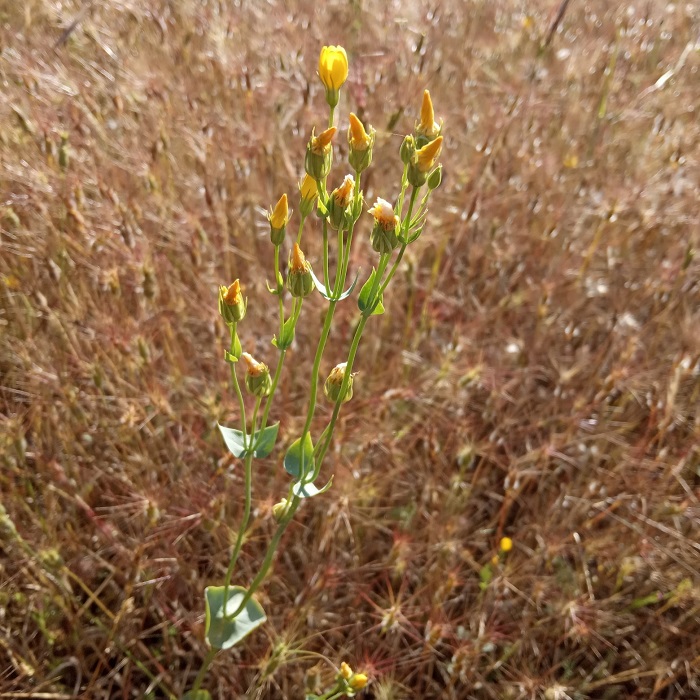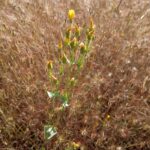Μπλακστόνια η αιχμηρή υποείδος η αιχμηρή
Etymology of Blackstonia acuminata subspecies acuminata: The name of the genus, "Blackstonia", is a tribute to John Blackstone (1712-1753), English pharmacist, botanist and plant collector, author of "Fasciculus plantarum circa Harefield sponte nascentium" (1737). Latin "acuminata" means "sharp, pointed", unknown why.
There are at least two Blackstonia subspecies/kinds in the wild Cypriot habitat, and the existence of a third one (Blackstonia acuminata subsp. aestiva) is questionable.
The plant does not appear in the Morfou region and its surrounding plains, as well as in the Karpasia peninsula. It primarily grows on stony ground and phrygana. Its flowering period is between May and July.
How to identify Blackstonia acuminata subspecies acuminata:
The plant is very similar to Blackstonia perfoliata subsp. intermedia and the differences between the two are minimal. The latter has its calyx divided almost to the base into linear-filiform lobes; its pedicels are considered slender, and generally less than 2 cm long; its styles are united for circa 1.5 mm; its cauline leaves are conspicuously perfoliate.
On the contrary, Blackstonia acuminata subspecies acuminata has its calyx with a distinct cupular base (a significantly narrower base compared to the circular of perfoliata subsp. intermedia, visible if you have both samples available), and the lobes lanceolate-subulate (minimal difference); its pedicels are stout, commonly 2-3 or up to 8 cm long (a visible difference); its styles are united for 2.5-3.5 mm (confusing); its cauline leaves are shortly connate, not conspicuously perfoliate (a visible difference if you have both samples available).

